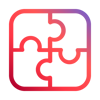
Company Overview
MAHLE is a leading international development partner and supplier to the automotive industry with customers in both passenger car and commercial vehicle sectors. Founded in 1920, the technology group is working on the climate-neutral mobility of tomorrow, with a focus on the strategic areas of electrification and thermal management as well as further technologies to reduce CO2 emissions, such as fuel cells or highly efficient, clean combustion engines that also run on renewable fuels, such as hydrogen. Today, one in every two vehicles globally is equipped with MAHLE components.
MAHLE generated sales of almost 11.7 billion euro in 2024. The company is represented with more than 67,000 employees at 135 production locations and 11 technology centers in 29 countries. (as of 31.12.2024)
Business Challenge
MAHLE faced growing complexity in its IT landscape delivering IT demands internally from planning budget to delivering value.
Scattered demands, unclear ownership, and inconsistent prioritisation were slowing progress and reducing business impact. Despite a strong technological foundation, operational inefficiencies limited agility and responsiveness. MAHLE needed a unified way to turn business needs into well-governed, value-tracked delivery—bringing Business and IT together around a single source of truth.
Strategic Response: A Structured Journey from Demand to Benefit
MAHLE partnered with Fusion Global Business Solutions and used design-thinking workshops to step back into the problem space, align stakeholders, and define the “to-be” model before tooling. The outcome is a centralised, standardised, and integrated framework on BMC Helix Portfolio Management with financial management embedded across the end-to-end value chain.
Operational Execution:
Requirements Management
- Centralised IT demand request form as a single source of truth
- Clear documentation and ownership
- Validation by line managers and cost-centre owners
Demand Evaluation & Financial Management
- Quick expert assessment and preliminary solution design
- Early budget and resource estimation aligned to business priorities
- Transparent approvals and prioritisation based on feasibility and impact
Demand Realisation: Project Management
- Efficient execution of approved, prioritised demands
- Integrated financial tracking from demand through delivery
- Benefit realisation and traceability from idea to outcome
What This Enables
- Clarity and control: Single environment for demand, finance, and delivery
- Alignment: Business and IT work from the same playbook, with clear ownership
- Fewer handoffs & less rework: Significant reduction of MUDA (waste)
- Scalable governance: Decisions improve earlier—before execution begins
Additionally
- Tool consolidation and process automation: Redundant systems were eliminated and workflows standardised in a single environment, reducing manual handoffs and configuration drift. This simplification lowers maintenance overhead and establishes a consistent, auditable process baseline across teams.
- Resources reinvested into higher-value initiatives: Time saved in intake, evaluation, and approvals is redirected to strategic delivery and innovation. Teams can focus on product improvements and cross-functional programmes rather than administrative work.
- Stronger perception of IT as a value enabler: With clear ownership, end-to-end visibility, and integrated financials, stakeholders can see how IT investment translates into outcomes. This has improved trust, accelerated decision-making, and strengthened Business–IT collaboration.
Ready for What's Next
MAHLE plans to extend the framework to strategic programmes and innovation demands, deepen integration with Finance and R&D, and add:
- Risk Management and Value Realisation Management
- Resource & Competency Management integration
- Predictive analytics and AI-driven demand forecasting/routing
- Broader idea management across business functions
The foundation is in place to keep building, adapting, and improving as the business grows.


